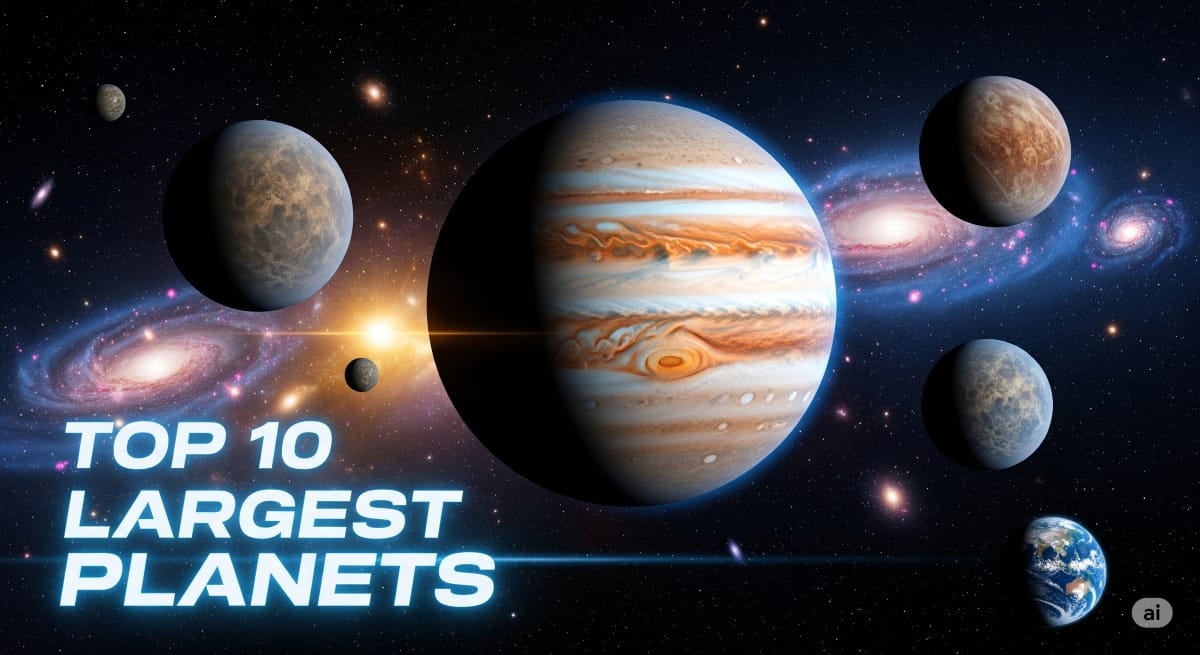The largest planets in the universe are truly mind-blowing. Our solar system’s biggest planet, Jupiter, is massive, but astronomers have discovered super-Jupiter planets that make Jupiter look small. These gas giants and biggest exoplanets discovered in the last few decades are enormous, some even close to becoming brown dwarfs (failed stars).
In this article, we will explore the Top 10 Largest Planets in the Universe, compare them with Jupiter and Earth, and learn what makes these massive worlds so unique. NASA
1. ROXs 42Bb – The King of Giants

- Size: 2.5× Jupiter
- Compared to Earth: ~27× Earth
- Distance from Earth: ~460 light-years
ROXs 42Bb tops the list of the biggest exoplanets discovered. It is a young gas giant, still glowing from the heat of its formation. This planet is so huge that it challenges the definition of a planet, making it a borderline brown dwarf. It’s one of the ultimate super-Jupiter planets in the universe.
2. HD 100546 b – A Growing Giant

- Size: 2.5× Jupiter
- Compared to Earth: ~27× Earth
- Location: Constellation Musca
HD 100546 b is still forming inside a protoplanetary disk. This makes it one of the most fascinating gas giants ever observed. Its size and potential growth mean it could one day rival the smallest stars. Among the largest planets in the universe, HD 100546 b stands out for its evolution stage.
3. GQ Lupi b – The Massive Companion
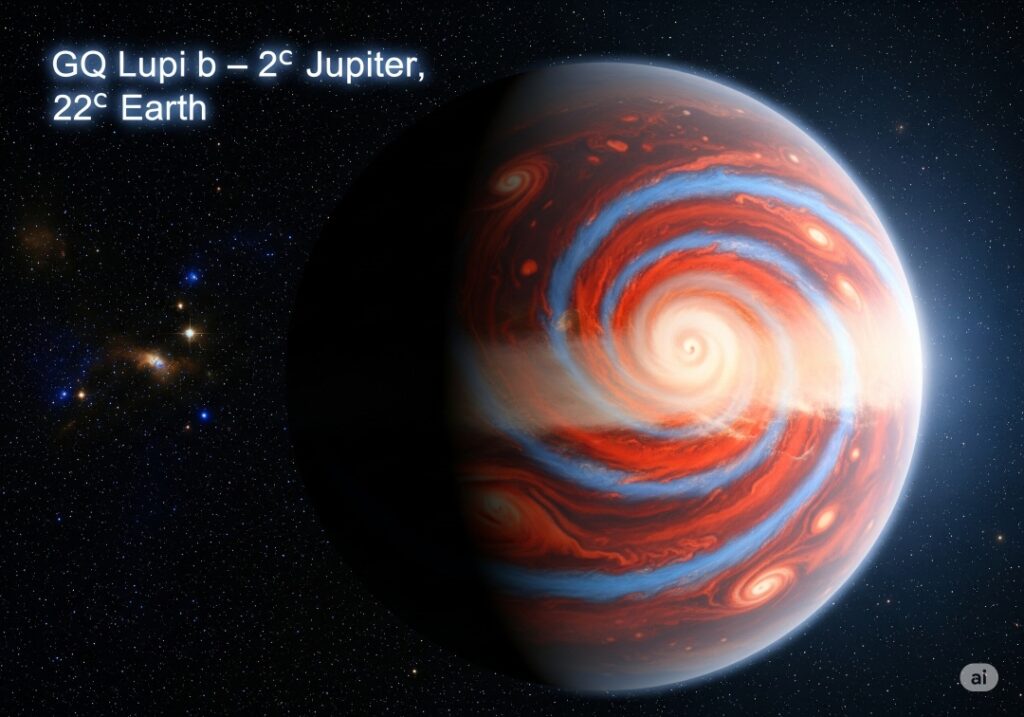
- Size: ~2× Jupiter
- Compared to Earth: ~22× Earth
- Distance: ~495 light-years
GQ Lupi b is another super-Jupiter planet that blurs the line between planet and star. Its mass is so high that some astronomers consider it a brown dwarf. It is one of the earliest biggest exoplanets discovered, making it historically significant.
4. HAT-P-32b – The Inflated Giant
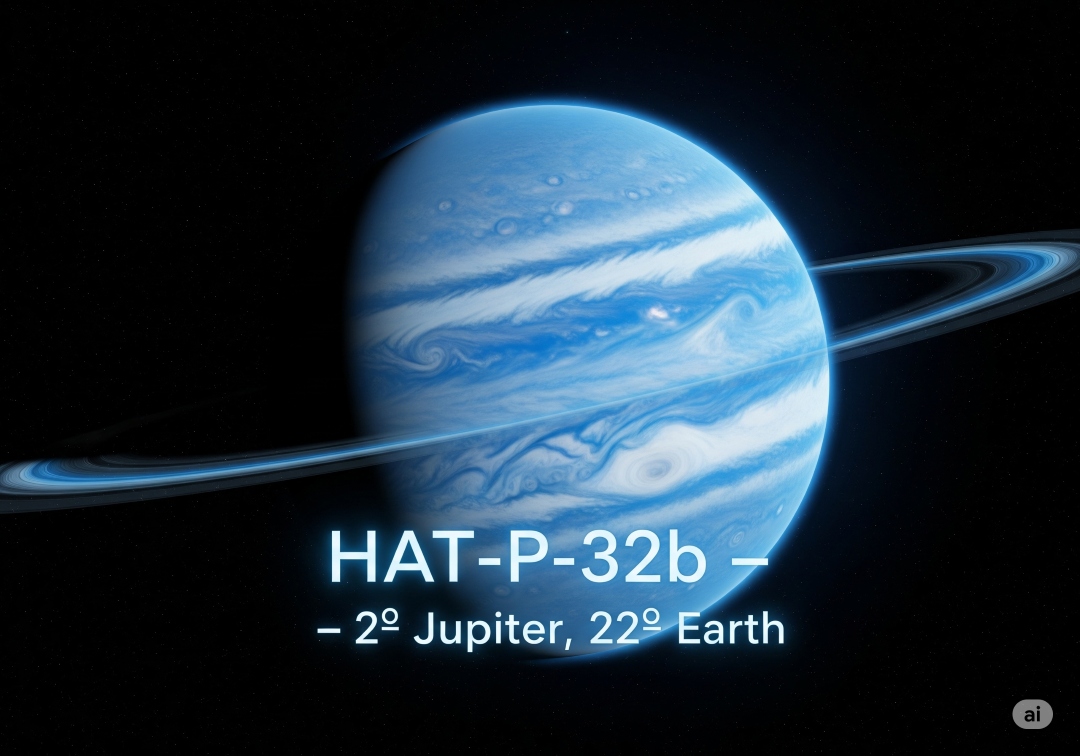
- Size: 2× Jupiter
- Compared to Earth: ~22× Earth
HAT-P-32b is a hot Jupiter—a type of gas giant that orbits extremely close to its star. This proximity causes its atmosphere to expand, making it one of the largest planets in the universe despite having relatively low density.
5. WASP-17b – The Strange Hot Jupiter
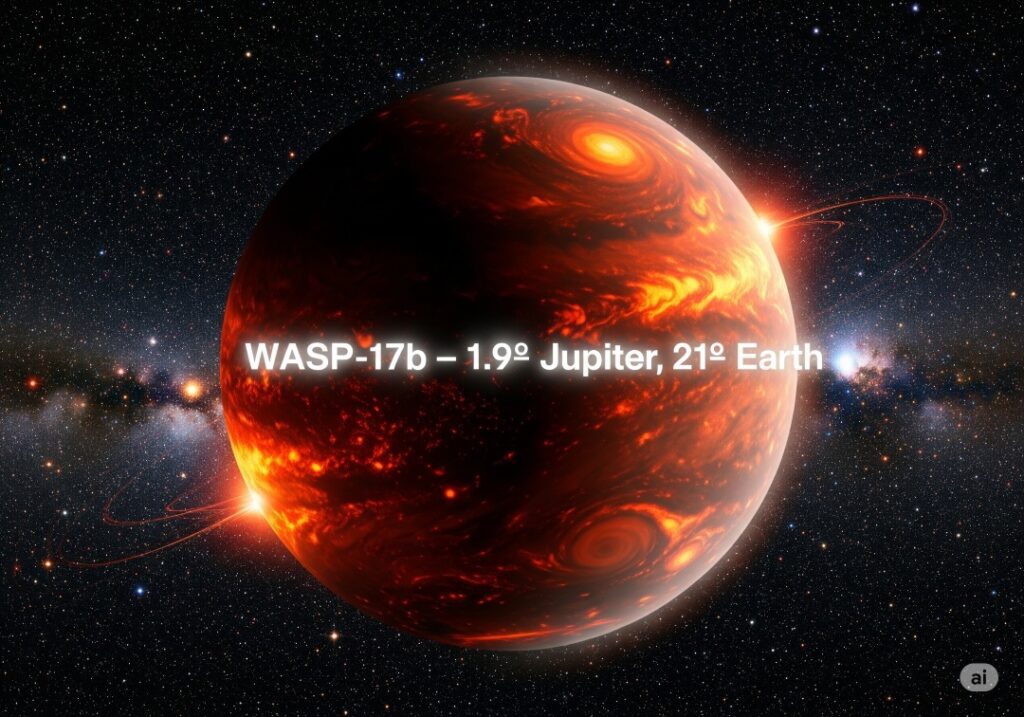
- Size: 1.9× Jupiter
- Compared to Earth: ~21× Earth
WASP-17b is not only big but also unusual. It orbits its star in the opposite direction of the star’s rotation, a phenomenon called retrograde orbit. This giant is a classic example of an inflated gas giant, ranking among the top 10 largest planets known today.
6. TrES-4b – The Puffy Planet
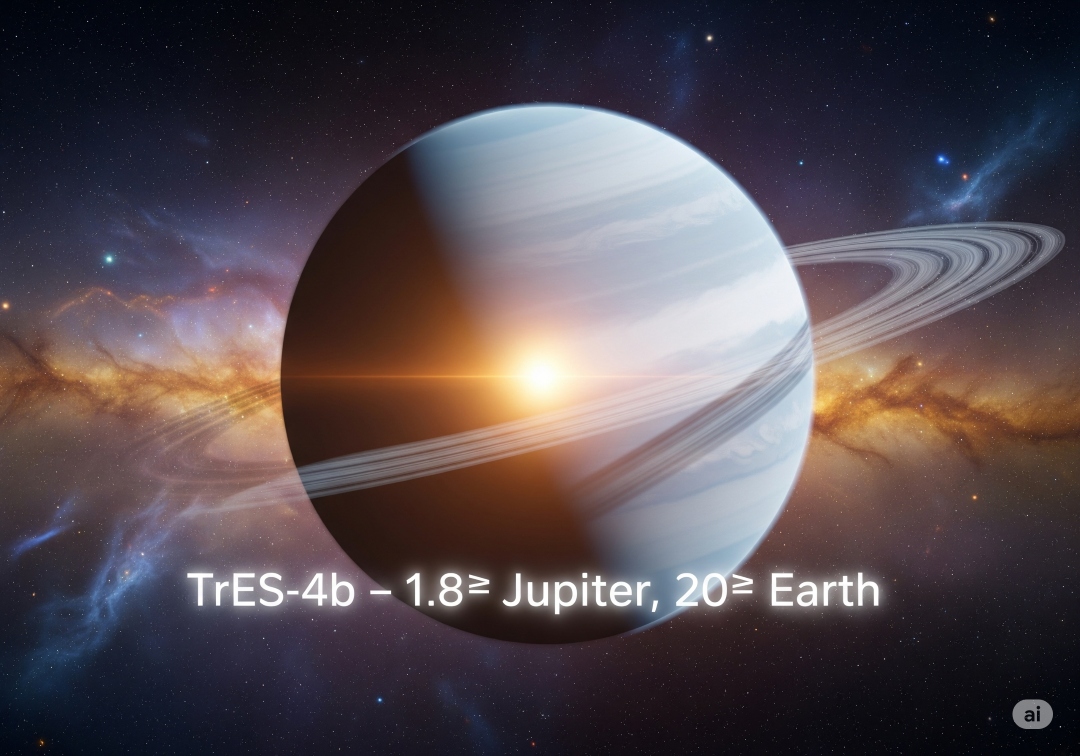
- Size: 1.8× Jupiter
- Compared to Earth: ~20× Earth
TrES-4b is one of the least dense gas giants ever discovered. Despite its huge size, it has very little mass compared to its volume, making it a “puffy planet.” This unique property secures its place in the list of largest planets in the universe.
7. HD 209458 b (Osiris) – The Famous One
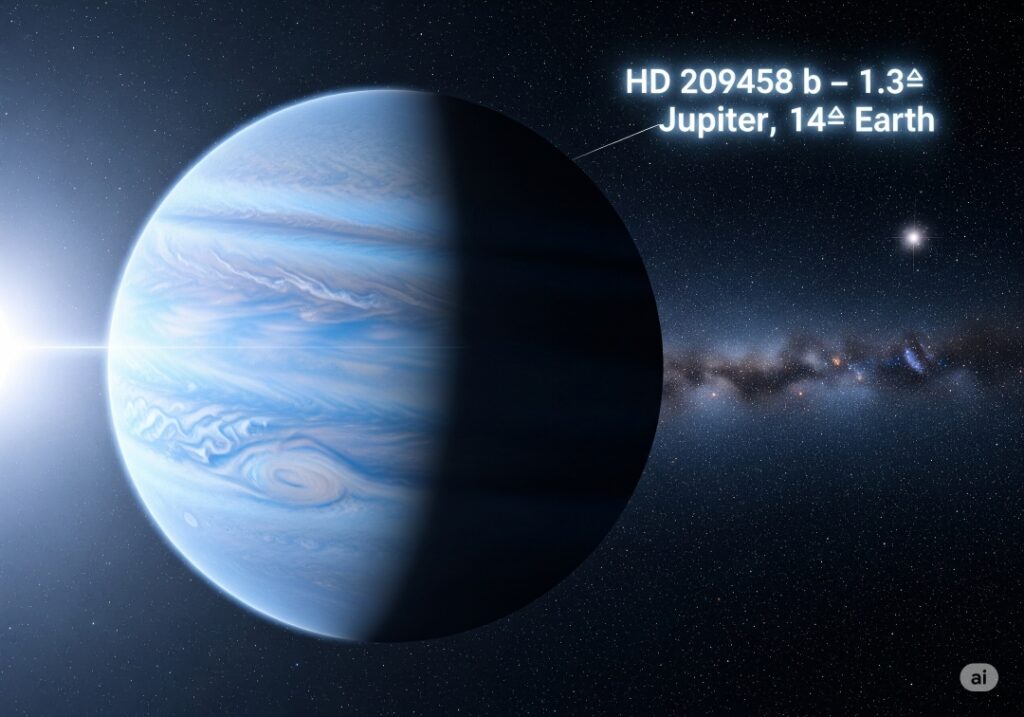
- Size: 1.3× Jupiter
- Compared to Earth: ~14× Earth
Osiris, officially named HD 209458 b, is famous for being the first exoplanet detected with an atmosphere. It’s a hot Jupiter, orbiting very close to its star, and is one of the earliest and most studied super-Jupiter planets.
8. Kepler-39b – The Heavy Giant
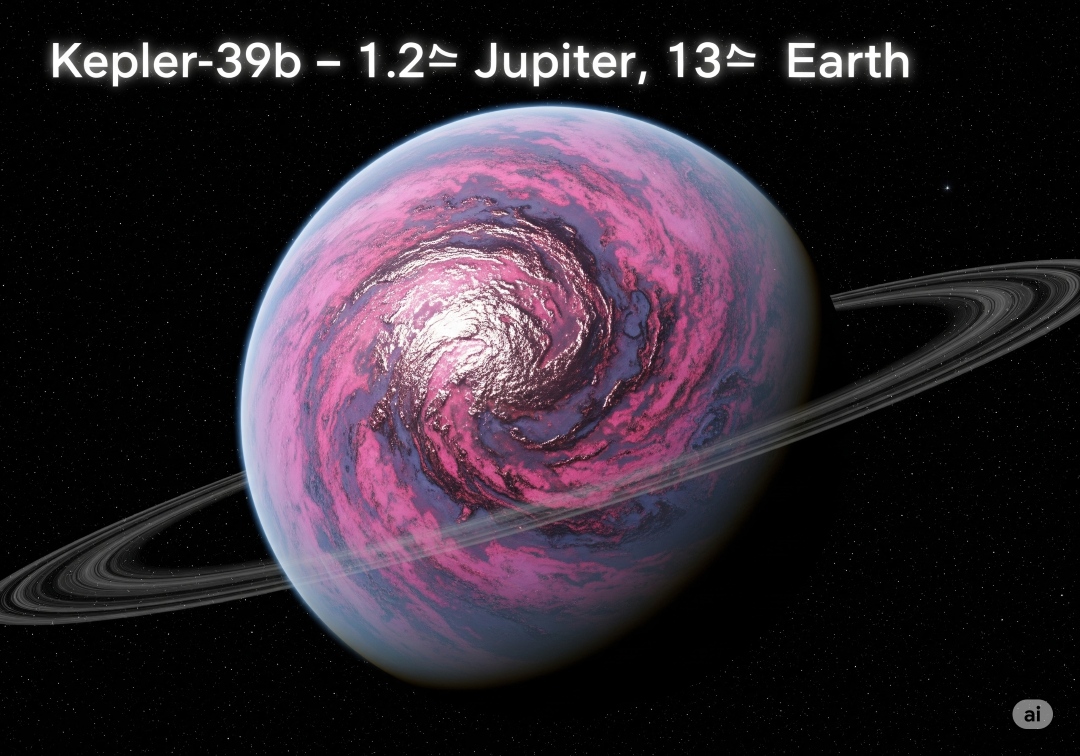
- Size: 1.2× Jupiter
- Compared to Earth: ~13× Earth
- Mass: About 20× Jupiter
Kepler-39b is not the largest in size but is extremely massive, making it a borderline brown dwarf. Its high mass makes it stand out among the biggest exoplanets discovered so far.
9. Kepler-75b (HAT-P-14b) – The Dense One
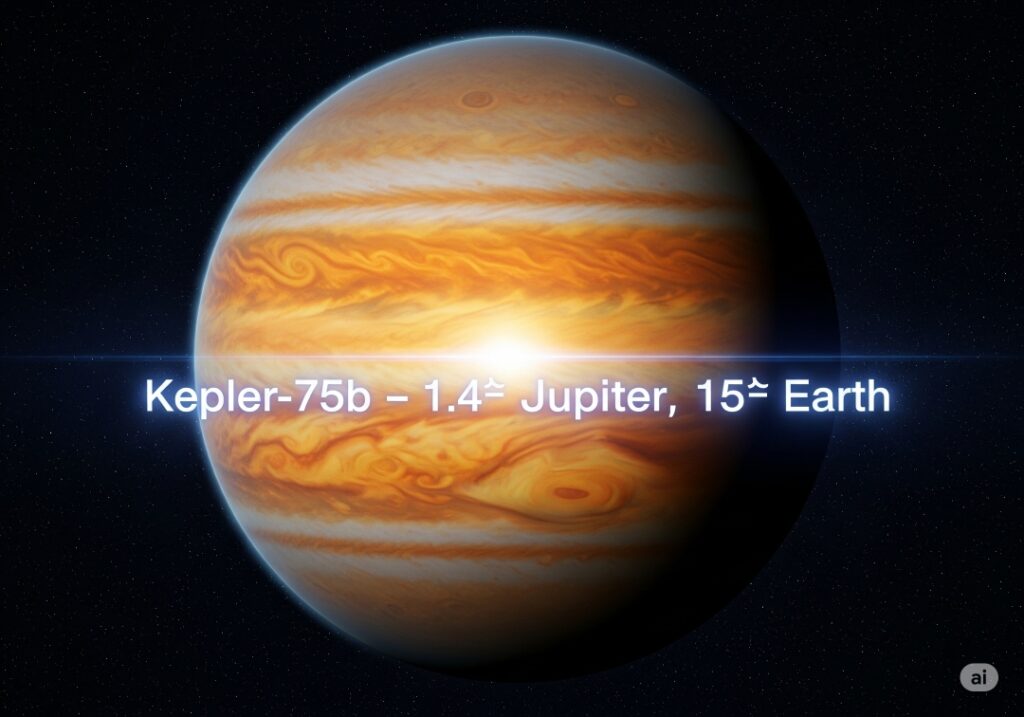
- Size: 1.4× Jupiter
- Compared to Earth: ~15× Earth
Kepler-75b is another hot Jupiter, extremely dense compared to other gas giants. It orbits very close to its star, which inflates its temperature but keeps its size moderate.
10. CoRoT-3b – The Borderline Brown Dwarf
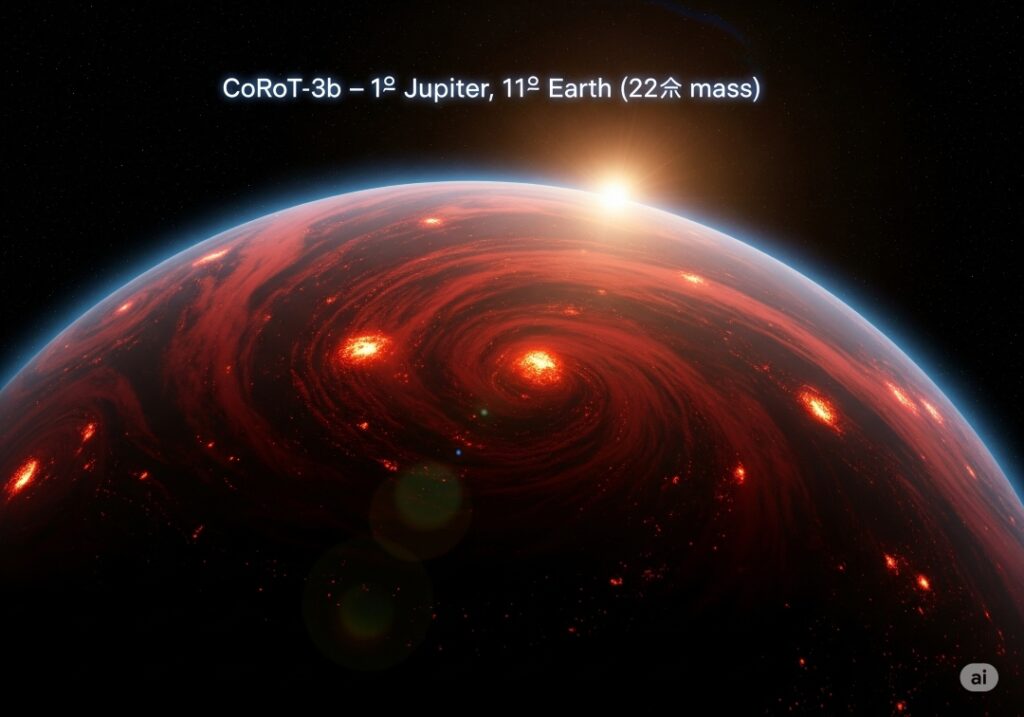
- Size: 1× Jupiter (but massive)
- Compared to Earth: ~11× Earth
- Mass: 22× Jupiter
CoRoT-3b is so massive that it nearly qualifies as a brown dwarf. This super-Jupiter planet is a perfect example of how the largest planets can blur the line between stars and planets.
Comparison Table: Jupiter vs These Giants
| Planet | Size vs Jupiter | Size vs Earth |
|---|---|---|
| ROXs 42Bb | 2.5× | ~27× |
| HD 100546 b | 2.5× | ~27× |
| GQ Lupi b | 2× | ~22× |
| HAT-P-32b | 2× | ~22× |
| WASP-17b | 1.9× | ~21× |
| TrES-4b | 1.8× | ~20× |
| HD 209458 b | 1.3× | ~14× |
| Kepler-39b | 1.2× | ~13× |
| Kepler-75b | 1.4× | ~15× |
| CoRoT-3b | 1× | ~11× |
Why Are These Super-Jupiter Planets So Huge?
Most of the largest planets in the universe are located far beyond our solar system and form in massive protoplanetary disks. They consist primarily of hydrogen and helium, making them gas giants. Some of these planets orbit very close to their stars, causing their atmospheres to inflate and making them some of the biggest exoplanets discovered.
The top 10 largest planets in the universe show how diverse and fascinating planetary systems can be. These super-Jupiter planets make Earth and even Jupiter look tiny. With advancing technology and telescopes, astronomers expect to find even bigger planets in the future, possibly challenging the very definition of a planet.
